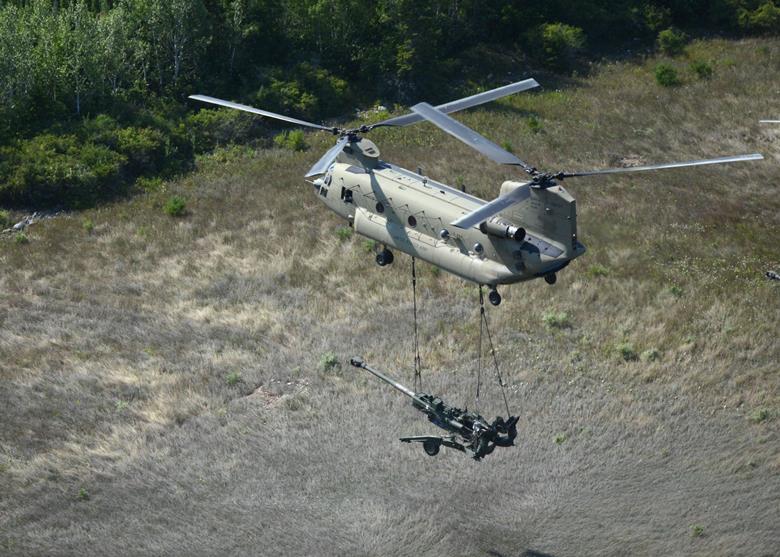Aerospace
Boeing Secures Major CH-47F Chinook Contracts, Marks Transition to Block II Design

Boeing was given a contract to build 18 CH-47F Block I Chinooks for South Korea and one additional aircraft for Spain as part of a U.S. Department of Defence Foreign Military Sale (FMS). The agreement, worth at up to $793 million, represents the last aircraft to be ordered under the current CH-47F Block I FMS contract with the U.S. government as Boeing continues to transition to producing the sophisticated Block II design.
With this order, CH-47F Block I manufacturing and delivery will come to an end in 2027, but Chinook modernization efforts will continue with the H-47 Block II programme, which is already underway. Block II has a more effective drivetrain, a strengthened airframe, and reworked fuel tanks that increase lift and range.
U.S. Army Orders Additional Enhanced CH-47F Block II Chinooks(Opens in a new browser tab)
Six Block II aircraft, 36 for the U.S. Army Special Operations Command (SOCOM), and 14 for the United Kingdom are now under contract with the U.S. Army. Since a few years ago, SOCOM has been getting Block II aircraft, and the U.S. Army will get its first CH-47F Block II at the beginning of 2024.
In the heavy-lift market, Block I and Block II aircraft will coexist. Spain will grow its fleet to 18 aircraft with this most recent purchase of Chinook Block I aircraft, and South Korea will join 15 other operators that take use of the digital cockpit and superior cargo handling capabilities.
Germany chooses Chinook for future heavy lift competition(Opens in a new browser tab)
“South Korea adds to a growing list of operators around the world that recognise the value the modernised CH-47F Chinook brings to the table,” said Vince Logsdon, vice president, Global Business Development and Strategic Marketing for Boeing Defence, Space & Security. “While Spain is already benefiting from the aircraft in Europe, we are honoured to support South Korea’s modernization of its heavy-lift helicopter with a product capable of meeting the stringent mission requirements in Asia Pacific.”

Aerospace
Boeing Transfers Rocket Stage to NASA, Paving Way for Human Moon Mission

Boeing has achieved a significant milestone by providing NASA with the second core stage of the Space Launch System (SLS) rocket.
This crucial component, crafted at NASA’s Michoud Assembly Facility (MAF), is set to propel the Artemis II crew into lunar orbit, marking humanity’s return to deep space after a 50-year hiatus.
The monumental Boeing-built rocket stage, the largest element of the Artemis II mission, will embark on a journey aboard the Pegasus barge, traveling 900 miles to NASA’s Kennedy Space Center.
Comparison of two legendary aircraft B777x vs B747 aircraft:Click here
Upon arrival, it will be meticulously integrated with other essential Artemis II components, including the upper stage, solid rocket boosters, and NASA’s Orion spacecraft within the iconic Vehicle Assembly Building. This intricate integration process is a vital step toward the eagerly anticipated Artemis II launch, slated for 2025.
“Boeing-built products helped land humankind on the moon in 1969, and we’re proud to continue that legacy through the Artemis generation,” remarked Dave Dutcher, vice president and program manager for Boeing’s SLS program. “Together, with NASA and our industry partners and suppliers, we are building the world’s most capable rocket and paving the way to deep space through America’s rocket factory in New Orleans.”
NASA, Lockheed Martin Reveal X-59 Quiet Supersonic Aircraft:Click here
The delivery of Core Stage 2 marks a significant achievement in the evolution of the SLS rocket. Towering over 200 feet and powered by four RS-25 engines, this core stage, coupled with two solid-fueled booster rockets, will generate a staggering 8.8 million pounds of thrust. This immense power is crucial to launching Artemis II and future missions into the vast expanse of space.
The SLS rocket stands unparalleled in its capability to transport both crew and substantial cargo to the moon and beyond in a single launch. Its extraordinary capacity will facilitate the delivery of human-rated spacecraft, habitats, and scientific missions to destinations including the moon and Mars, ushering in a new era of space exploration.
-

 Travel1 week ago
Travel1 week agoAir India to Expand US Operations with Three New Routes After a Decade
-

 Travel2 weeks ago
Travel2 weeks agoWhy We Should Avoid These Stamps in a Passport
-

 Airlines1 month ago
Airlines1 month agoInvestigations Reveal Fake Chinese Titanium in Boeing and Airbus Jets
-

 Tech4 weeks ago
Tech4 weeks agoChina’s CATL Plans 1,800-Mile Electric Plane Launch by 2027
-

 Airport3 days ago
Airport3 days agoTop 10 Largest Airports in the World by Size
-

 Aerospace4 weeks ago
Aerospace4 weeks agoChina’s Fighter Jets Turn Wings into Autonomous Drones
-

 Airlines4 days ago
Airlines4 days agoAir India Rolls Out A350s for Delhi-New York JFK and Newark Routes
-

 Defence3 weeks ago
Defence3 weeks agoBoeing Enhances Chinook with New Engines and Block II Upgrades at $96 Million







